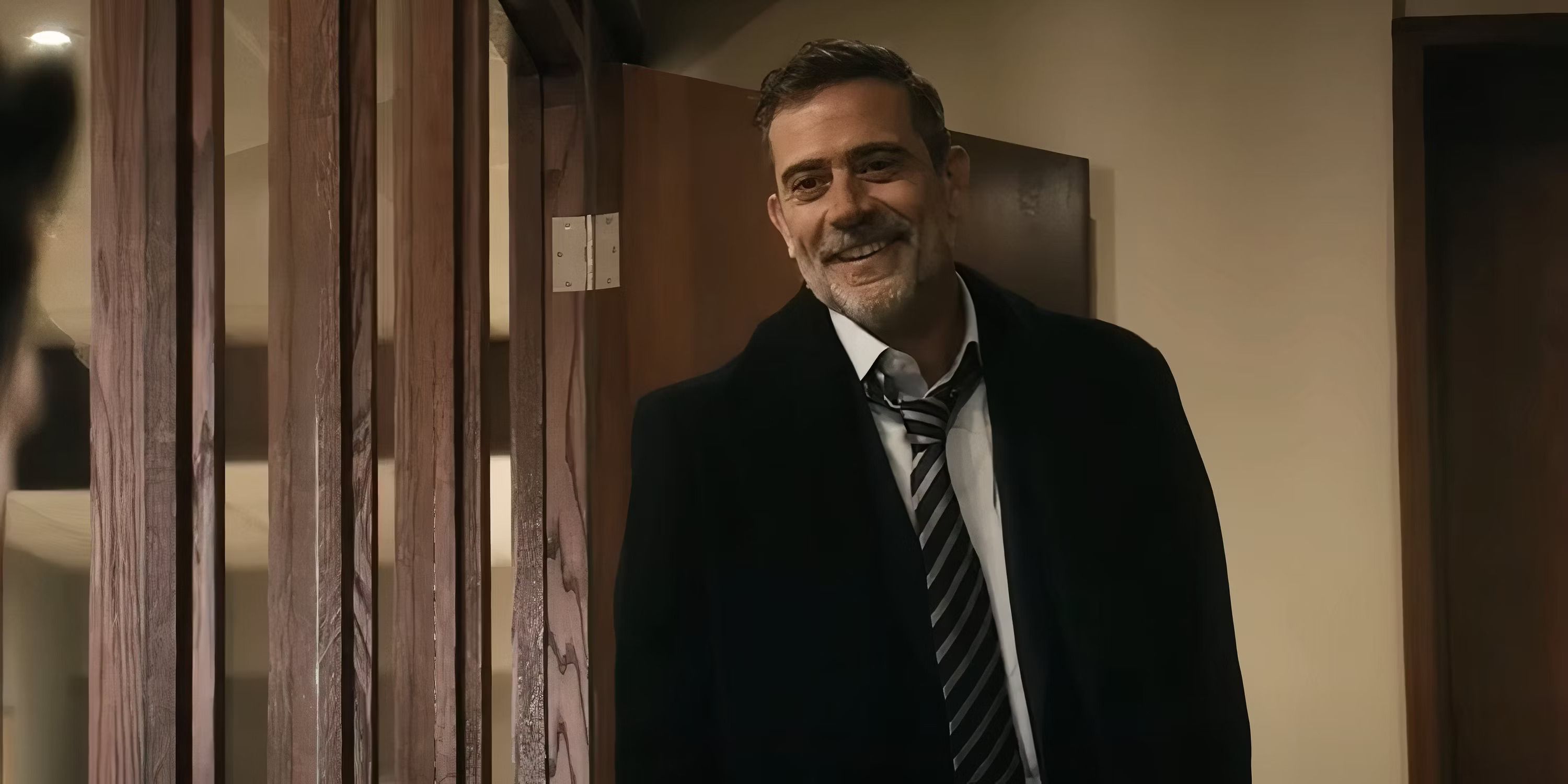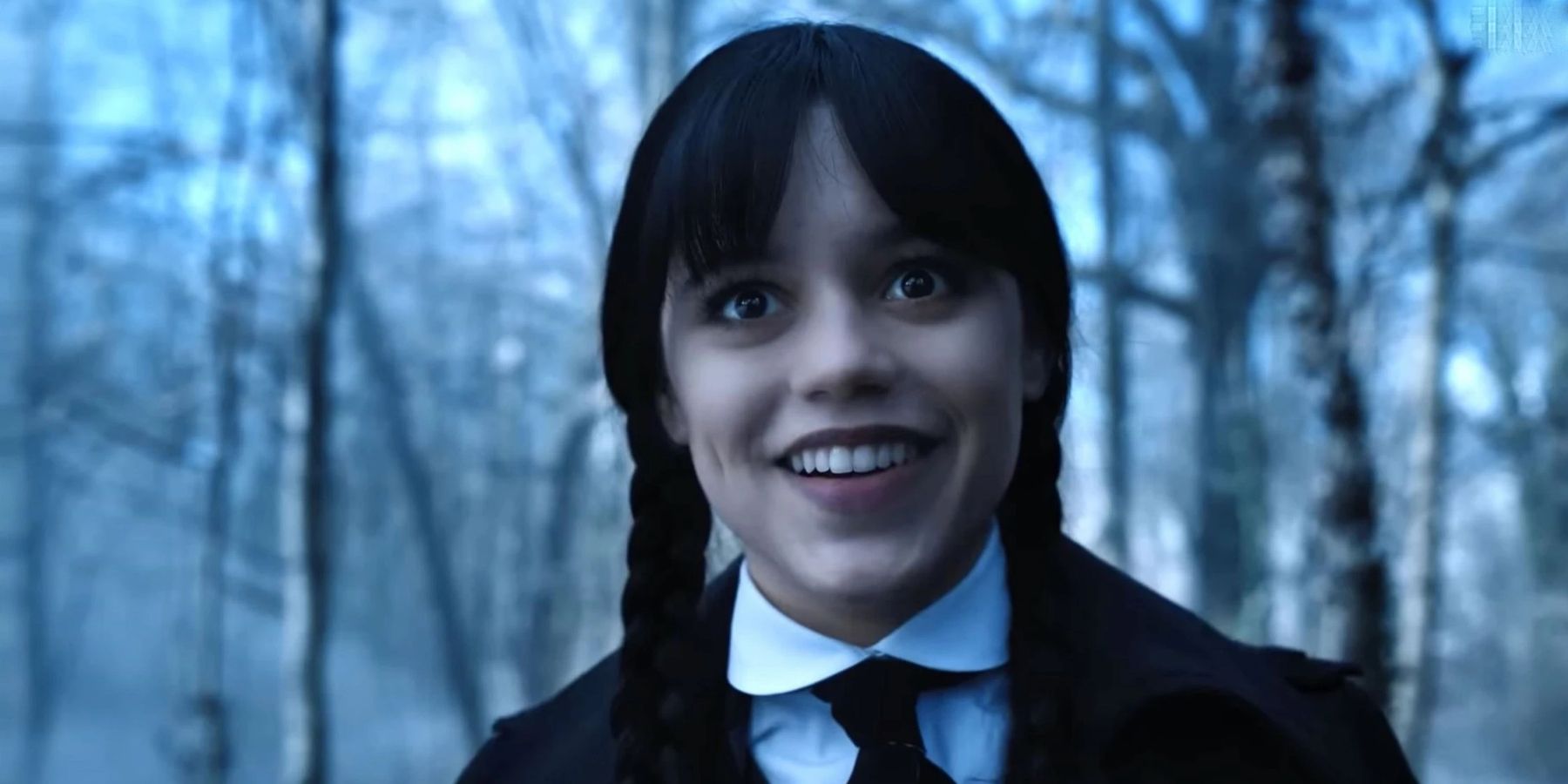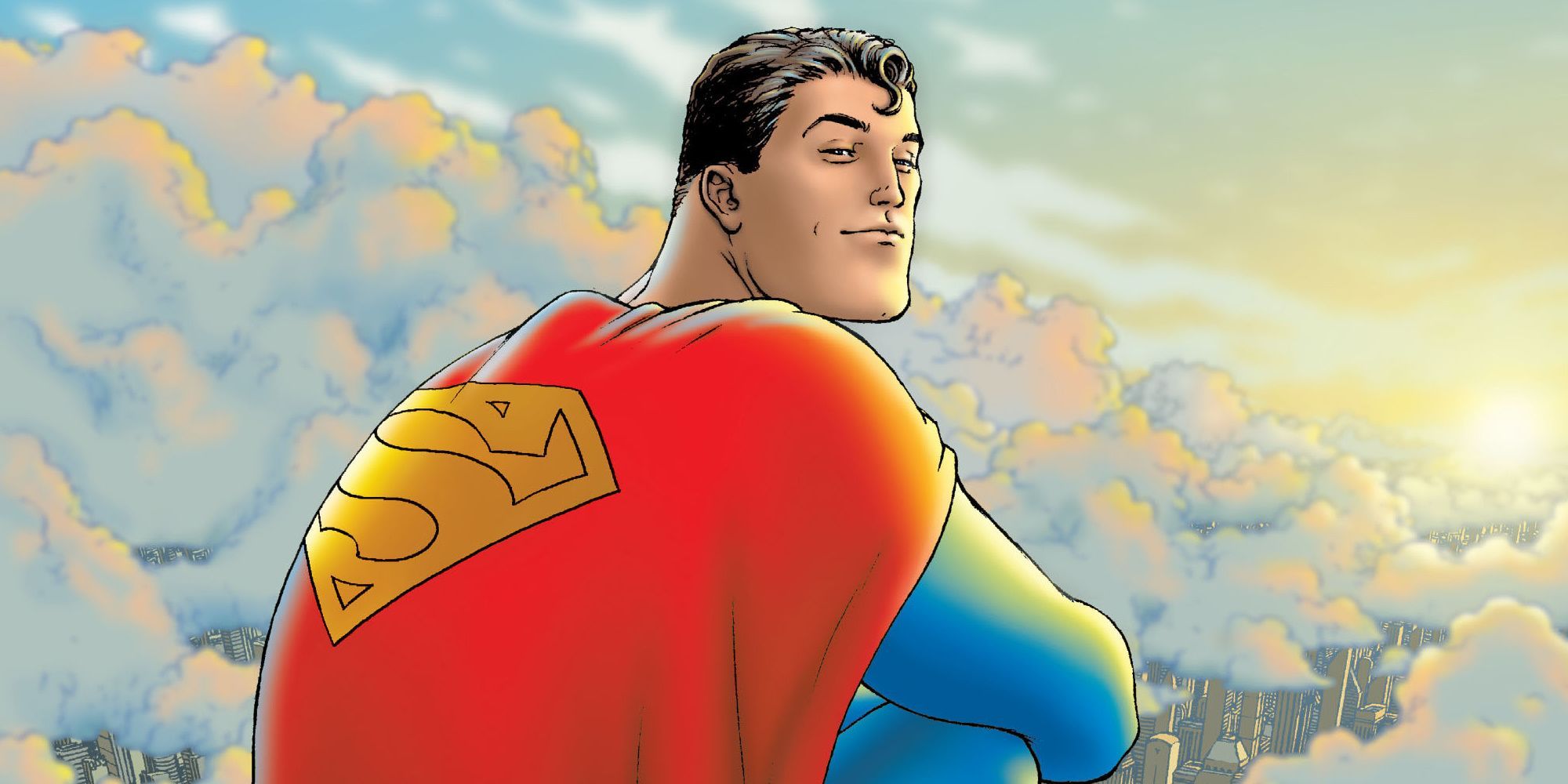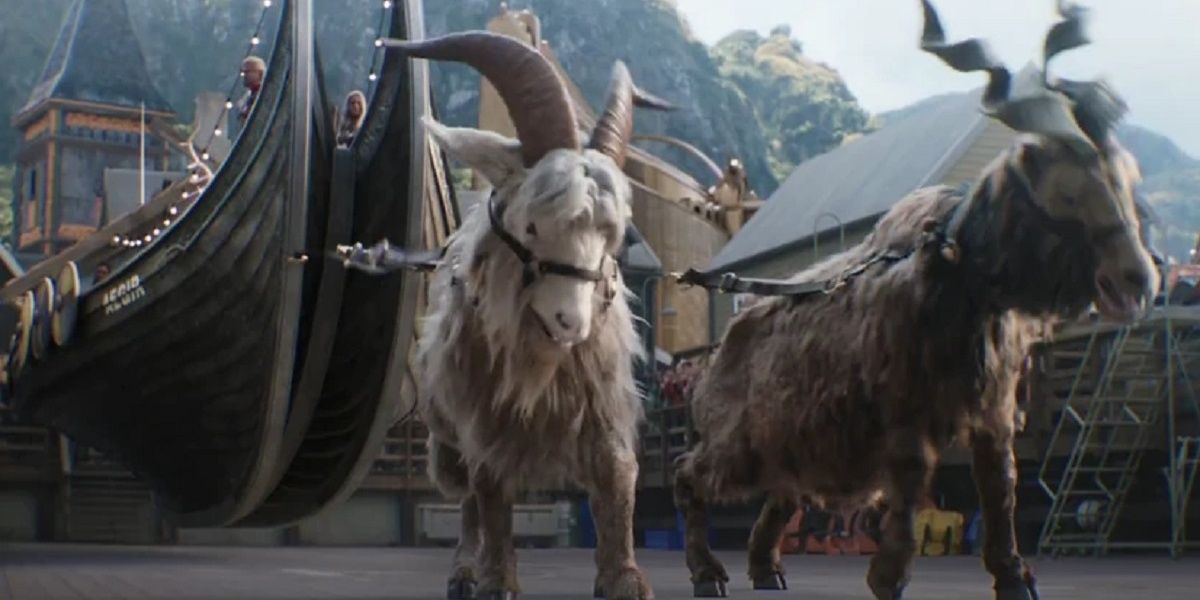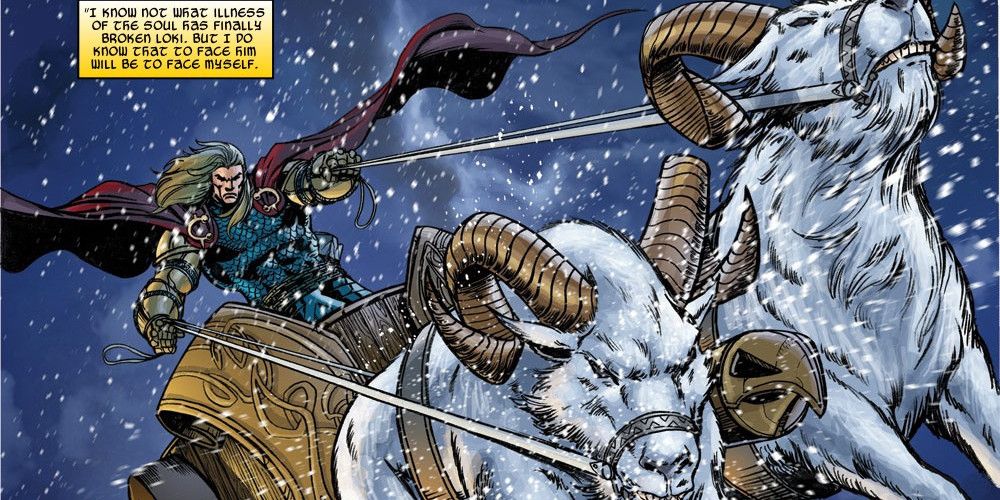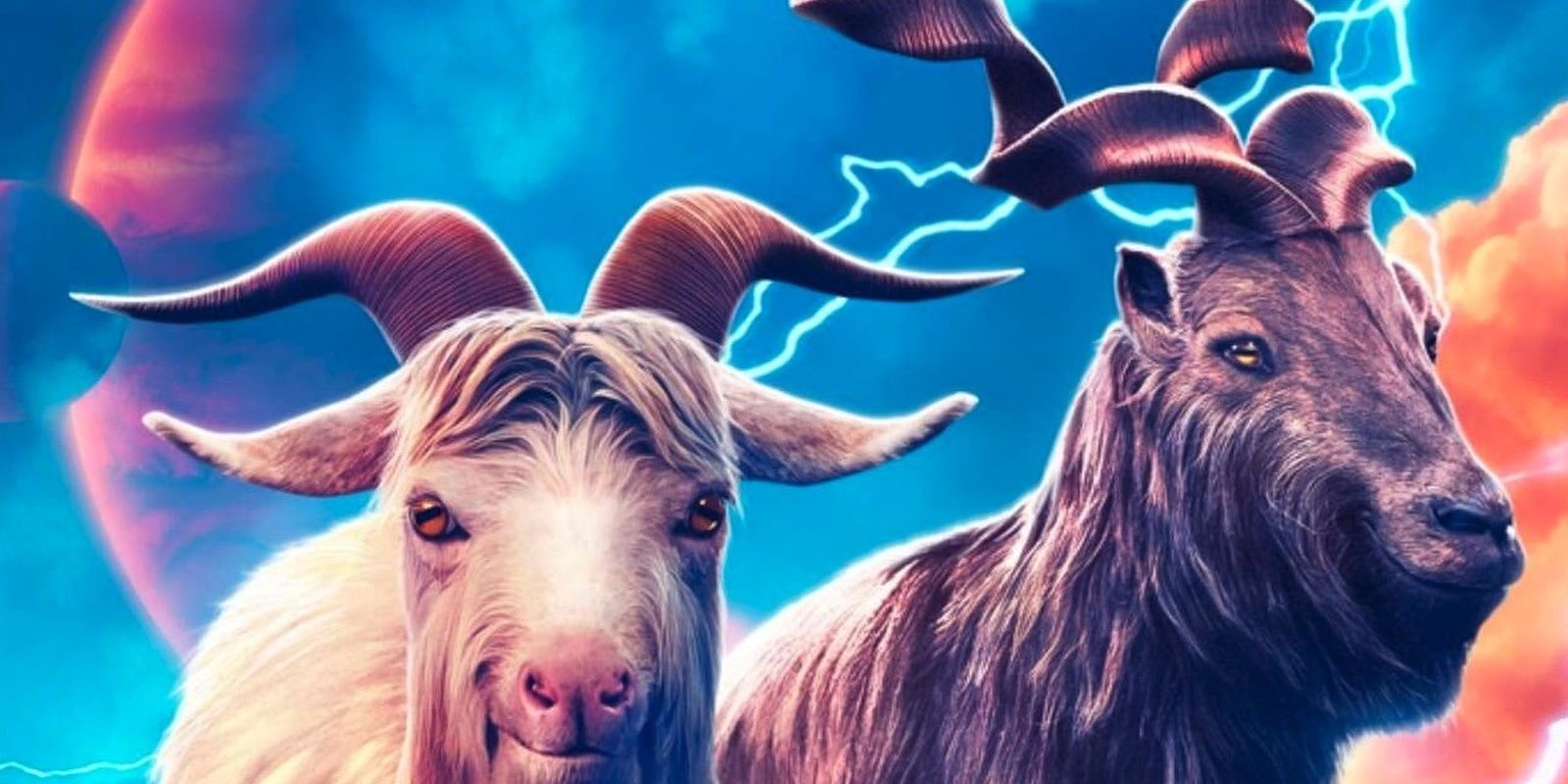The comedy of the Marvel Cinematic Universe has been a mixed bag over the past decade and change, and every fan has hits and misses in mind. It can be hard to weave a satisfying joke into an action superhero story, but, for better and for worse, no one takes more swings than Taika Waititi.
Thor: Love and Thunder and its predecessor Thor: Ragnarok were somewhat controversial for their focus on oddball comedy. While some loved the gag-a-minute dialogue, others felt that too much of the narrative's drama was undercut by one-liners. Waititi's second feature on the MCU sees some improvements on this issue but also doubles down on some jokes that may put audiences off.
Early in Thor: Love and Thunder, the God of Thunder finds himself picking up the ax to save a race of aliens from an army of violent invaders. After his overwhelming victory, slightly tainted by massive collateral damage, the innocent civilians he rescued present him with a humble reward. They bring a pair of massive goats who emit a nightmarish scream every few seconds. Thor finds them to be a titanic inconvenience from the moment he gets them, but the two large creatures become useful later in the plot. Thor winds up using his two goats as his new means of transportation, lashing them to a ship like a pair of extremely loud draft horses. These goats do not get names in the film's script, but their names are known because Toothgnasher and Toothgrinder have their origin in ancient Norse myth.
Gods have a lot of ways of getting around in Norse Myth. Shape-shifting into animals, magical wings, teleportation, but, most prefer the classic drawn chariot method. Odin has Sleipnir, his flying eight-legged horse to get where he needs to go. While Thor is often depicted flying through the sky by throwing his hammer, that concept was an invention of Jack Kirby and Stan Lee. Thor could still fly in the original myth, but not without help. Whenever Thor needed to travel between the nine realms, make a long voyage with an entourage, or make a grand entrance, he boards his chariot and cracks the whip on his two magical goats.
There are two primary sources of Norse myth, the Poetic Edda and the Prose Edda. The former is effectively a canonized compilation of ancient poems and stories that were previously passed down through generations by minstrels. The latter is more like a textbook written by Icelandic scholar Snorri Sturluson. These two works are effectively the totality of "source material" that mankind currently has to reference the stories of those who passed generations ago. It's in these two works that one could get acquainted with Toothgnasher and Toothgrinder.
Toothgnasher and Toothgrinder, known as Tanngrisnir and Tanngnjóstr in their original language, primarily appear in two stories from the Eddas. The old Norse tale Hymiskviða, or "Hymir's Lay" mentions the goats, but doesn't use their names. This tale is considered a bit of a hodgepodge by scholars, noting that it seems to be smashed together from multiple stories. Thor and his fellow god Tyr are tasked with acquiring a single kettle large enough to brew beer for the Aesir and their Jotun hosts. Tyr's frost giant dad Hymir owns a massive cauldron that should do the trick. Thor eats all of Hymir's food, almost catches the World Serpent Jörmungandr on a fishing trip, then smashes a glass on the old giant's head to win a test of strength. Angered by his terrible manners, Hymir insists they take the cauldron and leave him alone, leaving the Aesir to party happily. The goats serve as the means of transportation and little else, but Thor is given the title "lord of goats" at one point.
The other big role for Toothgnasher and Toothgrinder is in the Prose Edda, and it's the first mention of their names. Thor and Loki find themselves accepting the hospitality of a poor farmer and his family. The gods find that they have no food, so Thor makes a compromise and slaughters Toothgnasher and Toothgrinder, and cooks their meat in a pot. Thor instructs the group to throw the bones onto the discarded skins of his beloved beasts and eats well. During the meal, Loki tricks one of the farmer's children, convincing him that Thor is saving the delicious bone marrow for himself. The boy steals one of the bones, breaks it, and consumes the marrow. The following morning, Thor raises Mjolnir into the sky and uses its immense power to fully resurrect his goats. They are reincarnated almost unscathed, except one now walks with a limp. Thor is displeased, and as punishment, accepts the boy and his brother as servants. The goats were left behind, which either means that they got to live out their lives in the woods of Earth, or lived as farm animals for that peasant family.
Thor: Love and Thunder took an idea from the ancient myth and tied it into an outdated meme, so it would function as a reference, a joke, and a way to move the plot forward. Though the gag might not have landed with some, fans can't say it wasn't an interesting choice.

